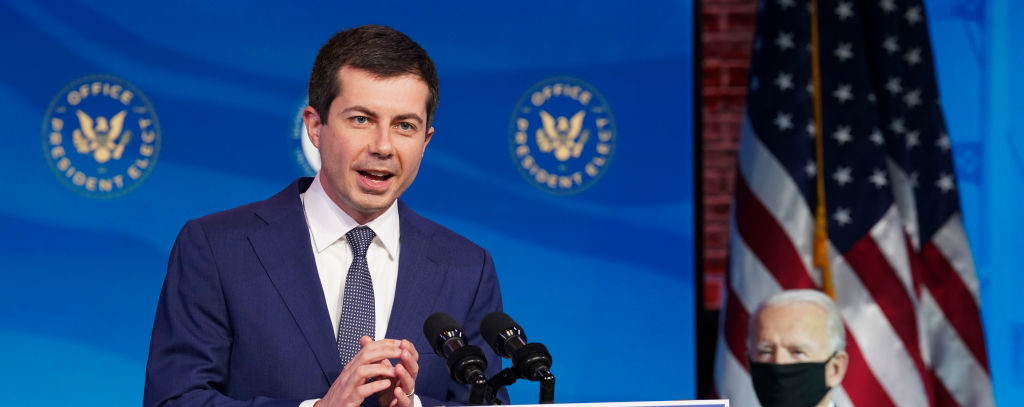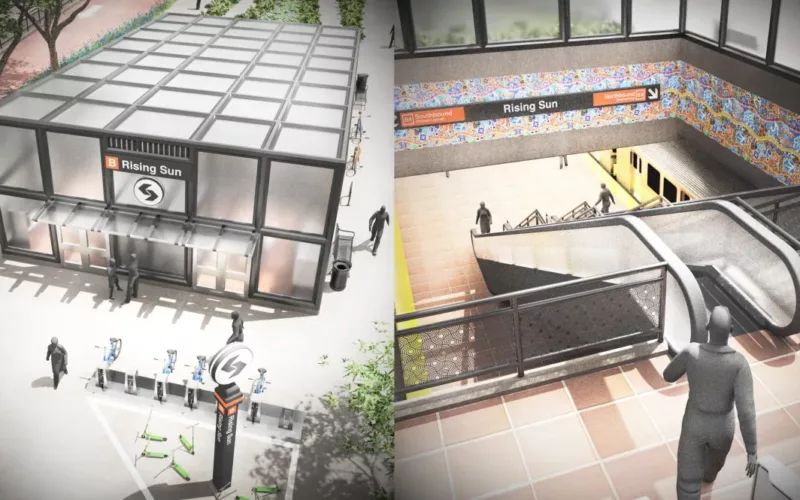
With the selection of Polly Trottenberg as Deputy Secretary of Transportation earlier this week, the task of filling out the ranks at US DOT began in earnest. In the days ahead, the White House will hire the undersecretaries, administrators, and decision makers who’ll steer national transportation policy for the next four years.
They will enter office as the nation grapples with what the Biden administration has identified as four overlapping crises — the COVID-19 pandemic, the economic contraction, climate change, and racial injustice. Smart, public-spirited transportation policy will be required to address all four.
Compared to Congress, the power of US DOT to directly allocate transportation resources is small. But in the hands of the right team, Pete Buttigieg’s department can still exert immense influence on the transportation landscape. Hiring good people to run US DOT matters a lot.
To meet this moment, DOT and its constituent agencies should be managed by people with technical and political expertise, but that is not enough. Appointees should also have a track record of working in the public interest, and focusing on the fundamentals of delivering good transit and safe streets.
With energetic leadership, DOT’s approval power and authority to set standards can open paths for local initiatives to make transportation systems more just and sustainable. The agencies under DOT’s umbrella can rewrite rules and regulations to lower transit construction costs, hasten the implementation of transit-priority streets, and make motor vehicle designs safer. Creative use of discretionary funds can leverage DOT’s limited resources to generate national impacts, as transportation agencies at the state, regional, and local level follow the federal lead.
For years the transportation field has lacked such guidance at the federal level. The Trump DOT chased fads, doled out pork to favored constituencies, and legitimized half-baked, venture-financed schemes beneath the banner of “innovation.” Under Elaine Chao, the Hyperloop was treated as a legitimate enterprise, while legitimately pathbreaking public policy like congestion pricing in New York City was stymied.
In the absence of federal leadership, too many local officials have been tempted by speculative fiction like Hyperloops and autonomous vehicles, or led down dead-ends like subsidies for Uber. Meanwhile, agencies that do want to create more equitable and sustainable transportation systems have not found a willing partner in Washington, scraping and clawing merely for routine approvals.
An abiding rule at the Trump DOT was to find ways for federal infrastructure funds to enrich private interests. A guiding principle at the Biden DOT should be to bolster local planning. Federal agencies can:
- Require strong equity measures in discretionary programs — and provide funding and technical support to help local agencies assess progress.
- Underscore that the transit innovation we most need is not a matter of technology but of governance that can deliver better transit, more quickly and in the places it is needed the most. US DOT can recognize achievements like San Antonio’s Via building bus shelters at scale and Metro Transit building equity into its planning — and use its discretionary funding to reward tomorrow’s agency innovators.
- Issue guidance to clarify gray areas in federal law that hamper the funding and financing of local transit projects.
In transportation, as in other aspects of government, personnel is policy. US DOT will fail to serve the public interest if it is staffed with industry operatives and lobbyists who waltz through the revolving door.
Both political parties are susceptible to letting private interests shape public policy. The Trump administration’s infrastructure advisor, DJ Gribbin (the go-to quote for many of those “Infrastructure Week” stories), arrived from Koch Industries and departed for a private equity firm in 2018. Many Obama DOT alums can’t claim the high ground, having taken lucrative executive positions at Uber, Lyft, and other transportation companies whose bottom line depends on exploitative labor practices and a government that looks the other way.
Trottenberg is an exception. Following her tenure as undersecretary for policy in the Obama DOT, she spent her time away from Washington in public service, leading NYC DOT as the agency implemented transit-priority and street safety projects. Her appointment bodes well for the next four years.
Both Trottenberg and Buttigieg, the former mayor of South Bend, Indiana, carry considerable experience in local government. That experience matters within US DOT leadership because the transportation system is inherently intergovernmental: Most of the infrastructure is owned and operated by state and local governments — who need the federal government to be a supportive partner.
The Biden DOT will need many more people with a commitment to public service. People who understand from experience how the federal government can help cities and transit agencies create more just and sustainable transportation. People who bring first-hand knowledge of relying on fragmented transit networks, who’ve experienced the transportation system as a tool of racial segregation, who know what it’s like to navigate an inaccessible city with a disability — and are brimming with ideas to solve these problems.
 On the Brink: Will WMATA’s Progress Be Erased by 2024?
On the Brink: Will WMATA’s Progress Be Erased by 2024?
The experience of being a WMATA rider has substantially improved over the last 18 months, thanks to changes the agency has made like adding off-peak service and simplifying fares. Things are about to get even better with the launch of all-door boarding later this fall, overnight bus service on some lines starting in December, and an ambitious plan to redesign the Metrobus network. But all of this could go away by July 1, 2024.
Read More To Achieve Justice and Climate Outcomes, Fund These Transit Capital Projects
To Achieve Justice and Climate Outcomes, Fund These Transit Capital Projects
Transit advocates, organizers, and riders are calling on local and state agencies along with the USDOT to advance projects designed to improve the mobility of Black and Brown individuals at a time when there is unprecedented funding and an equitable framework to transform transportation infrastructure, support the climate, and right historic injustices.
Read More